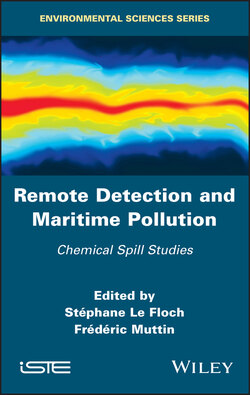Читать книгу Remote Detection and Maritime Pollution - Группа авторов - Страница 14
1.2.2. Hazardous and noxious substances
ОглавлениеSix chemical substances have been chosen to evaluate the capability of remote sensing sensors: rapeseed oil, fatty acid methyl ester (FAME), toluene, heptane, xylene and methanol. These chemicals are among the most transported substances by maritime freight in Europe. Methanol and liquid chemicals represent 46% of the 165 million tonnes annually transported by chemical carriers, while vegetable oil accounts for 29% [OLA 09]. Some of these chemicals are classified as the most noxious substances in the IBC Code (IMO website), which provides an international standard for the safe carriage by sea of HNS in bulk. These chemicals have already been involved in accidents at sea, for example Poona sank in 1971 with 600 T of rapeseed oil, Grape One sank in 1993 with 3,000 T of xylene, Cape Horn carrying a cargo of 14,000 T of methanol was seriously damaged by an explosion in the port of Livorno in 2003 [CED 15, CUN 15]. Rapeseed oil and FAME are part of the vegetable oil family; toluene, heptane and xylene are petrochemical products; methanol is part of the family of alcohols and derivatives. Their main properties are described below.
Rapeseed oil: rapeseed or colza oil is a vegetable oil obtained from crushed colza seeds. At ambient pressure and temperature, rapeseed oil is a viscous liquid with a specific gravity of 0.910. Rapeseed oil is insoluble in water and does not evaporate (vapor pressure below 0.01 kPa at 25°C); these characteristics classify rapeseed oil as a floater F in the SEBC.
FAME: fatty acid methyl esters are biofuel directly added to conventional fuels such as diesel. At ambient pressure and temperature, they are a liquid with a specific gravity of 0.888. This product is virtually insoluble in water (solubility of 0.023 mg.L−1 at 20°C) and has a relatively low evaporative potential (vapor pressure of 0.42 kPa at 25°C) making it a floater F in the SEBC.
Toluene: toluene, also named methylbenzene or phenylmethane, is an aromatic hydrocarbon that is commonly used as a chemical reagent or solvent, particularly in the industrial sector. Toluene is a liquid at ambient pressure and temperature and has a specific gravity of 0.867. Toluene is nearly insoluble in water (535 mg.L−1 at 25°C) and tends to evaporate relatively easily (vapor pressure of 2.91 kPa at 20°C). Considering the SEBC classification, toluene is a floating and evaporating (FE) substance.
Heptane: heptane is the generic term to identify one of the nine isomers of C7H16, and is a saturated hydrocarbon of the linear alkane family. This is a constituent of fuel and is used as an extraction solvent, a synthesis intermediate in the chemical industry and as a solvent for glues, inks, rubbers and plastics. At ambient pressure and temperature, heptane is a volatile liquid (6–7.7 kPa at 20°C) and nearly insoluble in water (< 2 mg.L−1 at 20°C). With a specific gravity of 0.710, heptane is lighter than water and floats. According to the SEBC classification, heptane is considered as an evaporator E.
Xylene: xylene or dimethylbenzene is a group of aromatic hydrocarbons with one methyl derivative on benzene. It is naturally present in oil and can be observed in (diesel) engine exhaust gases, either as a residual oil chemical or formed during incomplete combustion. Xylene is also produced from oil in the petrochemical industry and is one of the 30 most produced chemicals in the USA. It is used in the printing, rubber and leather industries mainly as a solvent. Xylene is an inflammable liquid with a pleasant fragrance. Chemical properties are similar from one isomer to another. Its specific gravity of 0.87 makes it float on water. Xylene is slightly soluble in water (solubility below 20 mg.L−1 at 20°C) and is not likely to evaporate (vapor pressure of 0.89 kPa at 20°C). Due to these characteristics, xylene is considered as an FE (floater and evaporator) in the SEBC classification.
Methanol: methyl alcohol or methanol is the simplest alcohol with the chemical formula CH3OH. At ambient temperature, this polar liquid is used as antifreeze (for coolant, for example), solvent or fuel (in aeromodeling, for example). Methanol is not present in large amounts in nature and is industrially produced. It is mainly used as the basic material for chemical synthesis of more complex chemical products. Nearly 40% of methanol is converted into formaldehyde, which is then transformed into plastics, synthetic resins, paints, explosives or fabrics. Methanol is a light liquid (specific gravity of 0.791), volatile (vapor pressure of 12.3 kPa at 20°C), miscible in water, inflammable and toxic with a characteristic odor. These properties enable the classification of methanol as a DE (Dissolving and Evaporating) substance.
